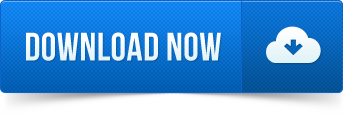Check out these free budget spreadsheets and start telling your money where it should go!
Are you spreadsheet illiterate? Or worse….are you a spreadsheet fanatic? Do you pray at the altar of your budget or are you the type that can’t-keep-a-budget-to-save-your-life? Whichever way you rock it, you’ll find a budget spreadsheet (template) that works for you in the list below!
Central to You Need a Budget (YNAB) is the concept of a “living budget,” or one that changes as your financial needs evolve. The entire YNAB system revolves around four simple rules: give every. YNAB charges a monthly subscription fee of $6.99 per month. They bill you annually, though, at $83.99 per year. They do offer a no-risk, 100% money back guarantee if you are unhappy with the program. Ynab Icons - Download Free Ynab icons @ IconArchive. Search more than 600,000 icons for Web & Desktop here. YNAB’s last version was YNAB 4, which was a desktop-based application. With the latest edition, YNAB has been rebuilt from the ground up. In the old YNAB, you'd log in to your bank account, download your transaction file, go back to YNAB, initiate the import, locate your downloaded transaction file, preview the import, make sure it was going.
I fall into the category of “spreadsheet fanatic.” I loveeee me some spreadsheets (can you blame?…I’m an engineer!). If I’m in a situation that can be solved by creating a spreadsheet, my happiness level instantly doubles, probably triples if I’m telling the truth. I’ll find any excuse to create a spreadsheet.
This list below starts with the simplest, easiest spreadsheet that anybody can use. As the list goes on, the spreadsheets get more detailed, complicated, and are able to do more things.

1. Simple Budget (from Microsoft Corporation)
If you want to set the simplest budget possible (input income and set a value for spending for each budget category), then this your spreadsheet. All it does is add up all your income, add up your projected spending in each category, and calculate the difference of the two (which will tell you if you are making more than you spend, or vice-versa). This spreadsheet does not allow you to put in your expenses, so you can’t evaluate if you’ve stayed within your budget at the end of the month.
2. Personal Monthly Budget (from Microsoft Corporation)

Ugh, SSOOOOOO simple. And it prints on one page. Yes and yes. This spreadsheet is SOOOOO simple. It breaks your budget into several obvious categories (housing, transportation, loans, etc). At the beginning of the month you can enter the amount you project to spend. At the end of the month you can enter how much you actually spent. The spreadsheet will calculate the difference and also summarizes all the categories at the top and bottom. Best part, each monthly budget fits nicely onto ONE page, so it’s a clean and easily printable document. I love this. It does everythign you need. Perfect if you are just starting out. Perfect if you are looking for a printable document to put in your budget binder.
3. Budget Slasher (from Girls Just Wanna Have Funds)
This spreadsheet is set up just like a budget, but aims to help you slash your budget. It calculates how much your monthly savings will be if you follow your new, slashed budget. To get this spreadsheet, you have to go to the Girls Just Wanna Have Funds website, scroll down a little, click “Download Now” when you see the Budget Slasher spreadsheet, put in your name and email, and it’ll download the spreadsheet on your computer and open in Google Documents so you can download on your computer.
4. Monthly Budget Spreadsheet (from Money Under 30)

This first tab of the spreadsheet is your run-of-the-mill budget. It breaks your budget into categories, and you can input your budget for each category. But the part I really like about htis spreadsheet is that there are an additional 12 tabs, one for each month of the year. In each monthly tab, you can enter how much you spent in a budget category on a specific day….and then the spreadsheet will calculate how much of your variable expense budget you have left. The only thing that would make this better is if it told you how much money you have left in each category.
5. Simple Monthly Budget (from Zero Based Budget HQ)
This is super simple. It’s different from the other spreadsheets because you can input the percentage of your income you want to allocate for each category instead of inputting the exact amount you want to allocate. For instance, if you want to give 10% of your income to charity, you just write 10%, instead of having to calculate the amount like $230.
6. The Super Easy Budget Form (from Trees Full of Money)
This budget spreadsheet exploded on Pinterest….and for good reason. This spreadsheet is helpful if you have debt because it tells you the “extra money” you have (the money you haven’t budgeted) that could go towards paying off debt.
7. YNAB Style Spreadsheet (from a Redditor on Reddit.com)
Ynab Classic Desktop
As the name suggests, this spreadsheet’s layout and function is very similar to the paid budget software called YNAB (You Need a Budget). It’s perfect if you want to create a zero-based budget. The spreadsheet requires you to put in all of your transactions and categorize them. It’s a very visually appealing spreadsheet and it nicely summarizes each months’ available budget, income, and expenditures.
8. Updated Personal Finance Tracker (from a Redditor on Reddit.com)
This spreadsheet has the basics – a monthly budget (I like this because it has all 12 months in one tab, and it allows your budget to change from month to month) and a transactions log to record all your spending. But it also includes some extras – a savings balance sheet and a net worth tracker (and associated charts). This spreadsheet is great if you have some experience with excel, if your budget changes from month to month, and if you want a spreadsheet that has more than just a budgeting capability.
How do you keep track of your budget? Is it from a spreadsheet template like the ones above, using a digital program, or good old fashioned pen and paper?
My History with YNAB
I have always been a strong advocate of You Need A Budget (YNAB). It is a wonderful piece of software for managing your personal finances and budget needs. I started using YNAB desktop version back in January 2014. I was 6 months away from graduating from college and my parents purchased me a YNAB license as a Christmas gift. This YNAB desktop version consisted of a one-time license fee that gave you access to the software “forever”.
YNAB Moves to Subscription Model
However, in late 2015, YNAB switched to a cloud-based subscription plan. You could continue to use the YNAB desktop version, but by mid-2016 they pretty much stopped supporting the desktop version. I didn’t see enough value in the new YNAB online to switch and start paying $7 per month.
I continued to use my “free” desktop version throughout 2017. At some point in 2017, the iOS YNAB Classic app stopped syncing properly. This was particularly frustrating because I liked being able to look up our budget on the go. This almost made me consider upgrading to the YNAB online subscription, but I ended up just deleting the app and only using the desktop version on my MacBook.
Why I Switched to YNAB Online
It wasn’t until I was transitioning jobs that I decided to finally make the switch to YNAB online. The primary feature that sold me on YNAB online was their import feature. This allows you to connect your bank and credit card accounts to YNAB and import transaction data. With the old YNAB desktop, I pretty much had to manually input every transaction. This ended up taking quite a bit of time.
Another motivating factor in my decision to make this switch was the fact that my wife is currently a student. YNAB has a student program, which provides you with YNAB for free for the first year and then a 10% discount for the years following.
As I started a new job, I knew I probably wouldn’t have as much free time and being able to eliminate the manual process of adding transactions would save me 20-30 minutes per day. This would also ensure that no transactions were missed.
The Difficult Transition
I’ll be honest. I had a really difficult time transitioning to the new YNAB platform. First, I tried to import our YNAB desktop data onto the new online platform, but I found this to be particularly frustrating. This frustration was primarily due to how I was recording certain transactions in YNAB desktop.
I ended up waiting for a new month to start and then used the fresh start function in YNAB online. This got rid of all the transaction data, but kept all of the vendor/payee data as well as my expense categories. The result was much cleaner than when I had initially tried to import the YNAB desktop version.
Here are a few of my minor complaints with the new YNAB online:
- Credit Card Transactions – I obviously have quite a few of these and it took me some time to get used to how YNAB online accounts for credit cards.
- Overspending w/in a Month – I liked how the YNAB desktop used to allow me to carry a negative balance from month to month. This was particularly helpful in things like gift card reselling where I purchased at the end of the month, but didn’t get paid till the following month.

Ynab Classic Desktop App
Overall though I really like the new YNAB online platform. I love being able to automatically import transactions and access my budget from pretty much anywhere. There are a few other neat little features/tricks that they’ve added, which I’m sure will be useful. I also hope that this new monthly subscription model will help YNAB continue to develop new features.
Related
